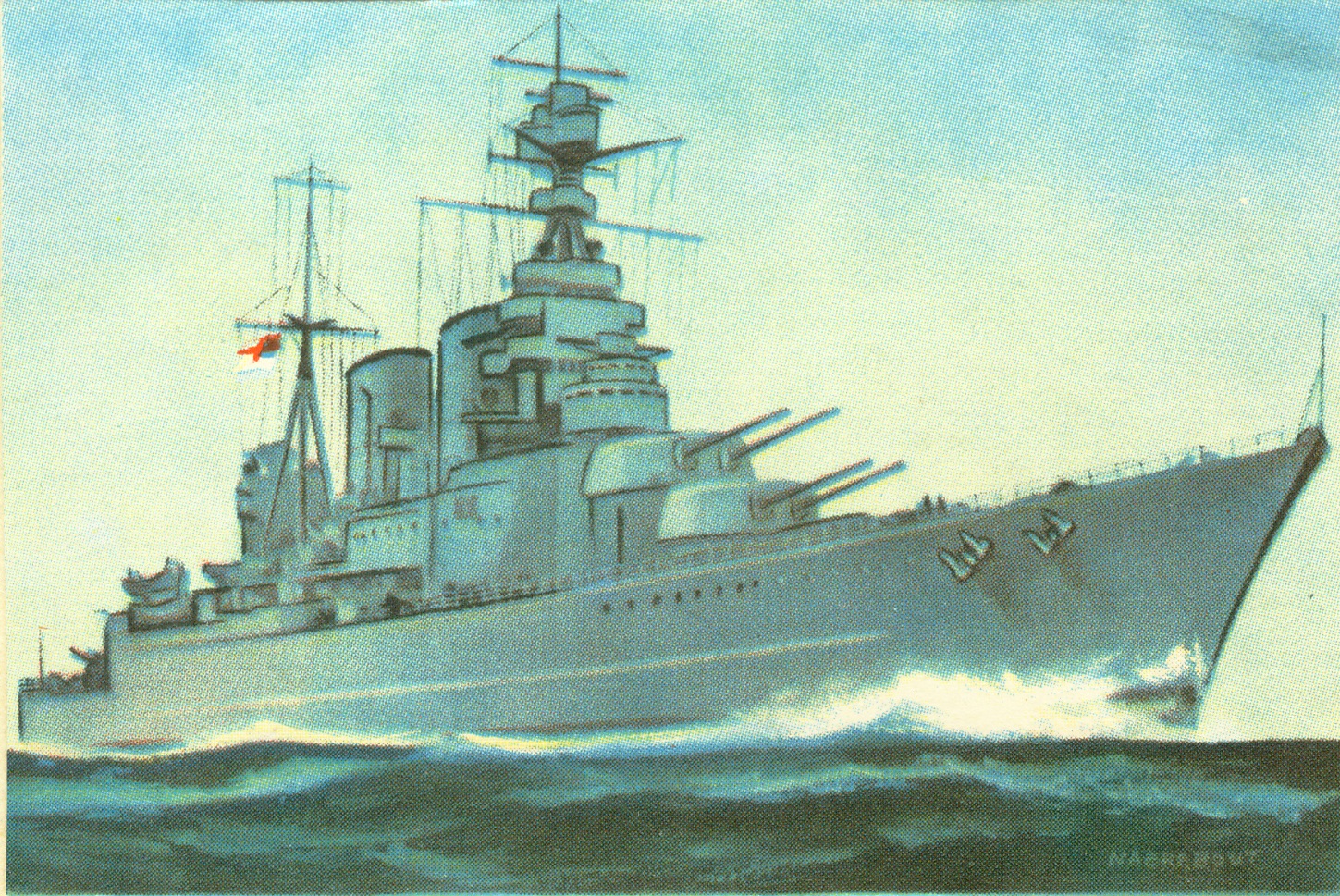King George V-class battleships
Drawing made by G.J. Frans Naerebout and published in Op de Lange Deining written by G.A.J. Bovens
Notes
1. King George V-class consisted of the King George V, Prince of Wales, Duke of York, Howe and Anson, preceded by the Nelson-class and succeeded by the Vanguard and by the never realized Lion-class. In 1928 was started designing this class regarded the limitations of the Washington Naval Treaty of 1922 which allowed non building of battleships until 1931. The design-process was for a second time halted due to the London Naval Treaty of 1930 which continued the building stop until 1937/ In 1935 started the Royal British navy again the designing process based on what already was achieved. The Treaty limited the displacement to a maximum of 35.000 tons and further more was the calibre of the main armament discussed. The choice was 14-16” with a first choice for 15” guns, However in October that same year it was decided that the calibre was to be 10-14” guns instead of 15”, a decision heavily protested by First Lord of Admiralty in 1935 Winston Churchill.
2. Laid down by Vickers-Armstrong, Walker Naval Yard, Newcastle-upon-Tyne, England on 1 January 1937, launched on 21 February 1939, commissioned on 11 December 1940, involved in the battle with the German battleship Bismarck on 26-27 May 1941, training vessel since December 1946, part of the moth ball fleet since June 1950, laid up in extended reserve in December 1955, decided to be broken up in 1957 which started in 1958 at Dalmuir, Scotland by Arnott Young.
3. Laid down by the Cammell Laird and Company Ltd., Birkenhead, England on 1 January 1937, launched on 3 May 1939, completed on 31 March 1941, commissioned on 19 January 1941, involved in the battle with the German battleship Bismarck on 26-27 May 1941 and sunk during a Japanese air attack together with the British battle cruiser HMS Repulse off Kuantan, South China Sea on 10 December 1941. She was to be named King Edward VIII but when he abdicated she was renamed Prince of Wales before the building even was started.
4. Nicknamed Mighty Hood. Pennant 51. Her building at the shipyard of John Brown&Company was ordered on 7 April 1916, laid down on 1 September, launched on 22 August 1918, commissioned on 15 May 1920 as world largest warship, sunk on 24 May 1941 during her battle with the German battleship Bismarck. The only one of the four projected Admiral class battle cruisers caused by an insufficient design despite the modifications after the Battle of Jutland (31 May-1 June 1916).


